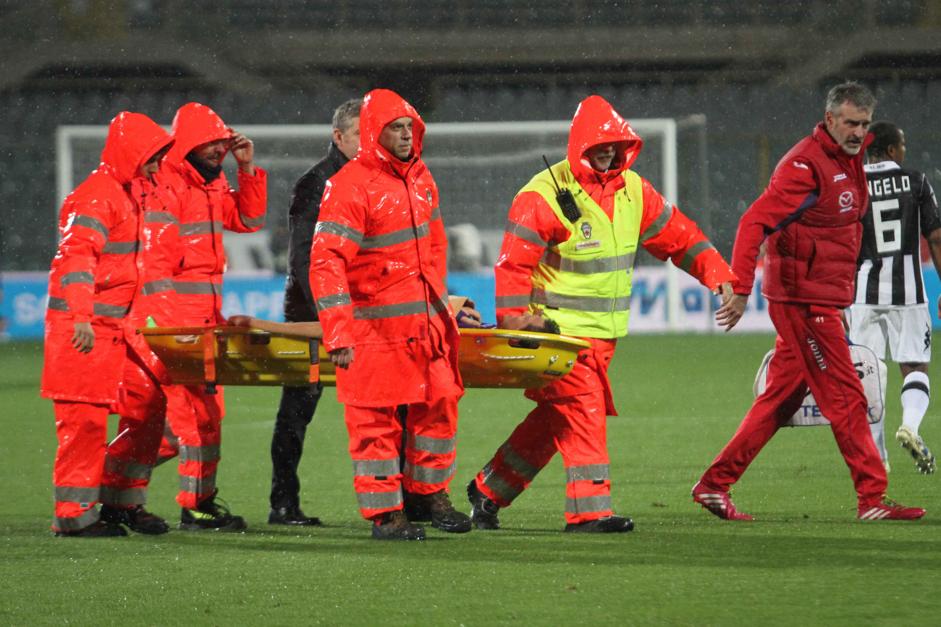
Sports injuries requiring treatment in the emergency room
Sports-related injuries range from very minor bruises to life-threatening accidents: sports injuries must therefore be looked at as a whole
When an injury is serious enough to require emergency medical treatment, it is imperative that you know it is time to go.
There are 5 main types of sports-related injuries that should raise a red flag and result in a visit to the emergency room
- Head injuries
- Chest pain
- Neck injuries
- Broken bones
- Shortness of breath
This is not to say that every injury or accident that falls into one of these categories requires a visit to the emergency room, but when certain symptoms or levels of severity are involved, it certainly does.
If an athlete suffers a blow to the head, the potential for concussion exists.
A concussion is literally a traumatic brain injury that can cause serious consequences.
Immediate transport to the emergency room is required if an athlete experiences any of the following conditions after a blow to the head:
- confusion
- bruising of the scalp
- loss of consciousness
- severe headache
- vomiting
- unusual behaviour
- drowsiness or drowsiness
Another potential life-changing injury would be anything involving a player’s neck.
Following any neck injury, an athlete should go to the emergency room especially if they begin to experience numbness or tingling in their limbs or are unable to speak or swallow.
During the game, most athletes will also experience shortness of breath.
This is natural since participation in a sport requires players to exert extra energy in what they are doing.
However, if an athlete’s breathing becomes so laboured that he or she cannot catch it, cannot speak or is causing pain, seek immediate medical attention at an emergency room.
As is evident, there are several cases in which sports injuries during a major game can be very serious indeed
Another important sports-related injury that may require first aid treatment are bone fractures.
While some fractures may be able to wait until the next day, a trip to the emergency room is mandatory if the injury causes pain that will not stop, if there is a large lump at the site of the injury, or if there is any other visible physical deformity.
If the skin breaks at the site of the potential bone fracture, an emergency medical team should also be consulted to avoid potential life-threatening complications.
Finally, on our list today is any injury that causes chest pain.
Any athlete who complains of chest pain that does not stop or is accompanied by shortness of breath should be seen immediately in the emergency room.
The aim with this list is not to invoke fear in anyone, but simply a level of awareness.
Doing sport is also about being aware of all aspects of it.
Read Also
Emergency Live Even More…Live: Download The New Free App Of Your Newspaper For IOS And Android
Why Sports Coaches Need First Aid Training
Drowning Resuscitation For Surfers
Skiing Injuries: What They Are And How To Prevent Them
Anterior Cruciate Ligament Injury: Symptoms, Diagnosis And Treatment
Knee Pathologies: Patellofemoral Syndrome
Meniscus, How Do You Deal With Meniscal Injuries?
Meniscus Injury: Symptoms, Treatment And Recovery Time
First Aid: Treatment For ACL (Anterior Cruciate Ligament) Tears
Knee Cartilage Damage: What It Is And How To Treat It
First Aid For Sprains: When To Use Ice Or Heat
Anterior Cruciate Ligament Injury: Symptoms, Diagnosis And Treatment
Wrist Fracture: How To Recognise And Treat It
How To Put On Elbow And Knee Bandages
Meniscus Injury: Symptoms, Treatment And Recovery Time
First Aid For Knee Pain And Injury
Wrist Fracture: How To Recognise And Treat It
Carpal Tunnel Syndrome: Diagnosis And Treatment
Knee Ligament Rupture: Symptoms And Causes
Lateral Knee Pain? Could Be Iliotibial Band Syndrome
Knee Sprains And Meniscal Injuries: How To Treat Them?
Treating Injuries: When Do I Need A Knee Brace?
Firefighter As A Vocation: The Story Of Renard Cox, From The NFL To Richmond Firefighters
Why Sports Coaches Need First Aid Training
First Aid, The Five Fears Of CPR Response
Perform First Aid On A Toddler: What Differences With The Adult?
Heimlich Maneuver: Find Out What It Is And How To Do It
Respiratory Arrest: How Should It Be Addressed? An Overview
NFL, CPR And Ambulance On The Field For Player Damar Hamlin: 24-Year-Old Is In Critical Condition
Winter Sports Injuries: The Rules To Follow To Avoid Them


